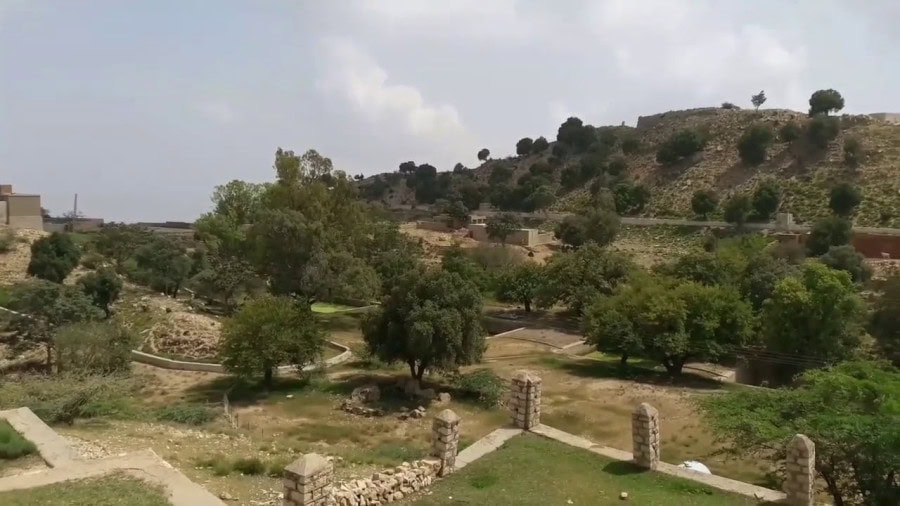KARACHI — Chili is an important food crop of Pakistan, with major production ratio in Sindh. Though, Kunri in Umerkot district is famous and used to be the capital of chilly production, but it is found that Badin is also suitable for chily crop because of its climate and soil.
Roshan Ali Kaloi, a father of three kids, is a young small farmer of 5 acres, who has grown chilies, the crop that is very sensitive to water logging and can tolerate water stress better than standing water which results in many soil borne diseases. He has grown it on one acre of his salinity-affected land with the hope to earn good income and be able to manage the hard days in case if land is not cultivated due to water scarcity. He is afraid of the uncertain availability of water in the coming time due to multiple reasons and considers it as a big threat for the tail-end small farmers. He lives in the village Amir Bux Kaloi, an extreme tail end area of Badin district.
He is one of the poor and small farmers who got assistance from the SKALA project of the ACF international and LHDP to grow red chilies with improved farming practices and demonstrate it to the neighbouring farmers to promote resilient farming practices. He was provided with the good quality seed of ‘Longi Ghotki variety’ of chilies, fertiliser, an amount to prepare the land and the training on how to grow it. He has recently harvested the first crop that is around 5 to 5.5 maund and expects four to five crops. This comes to around 20 to 25 maund of production. Current rate of per maund is approximately PKR. 13000 in local markets of Badin and Mirpurkhas.
The SKALA project directly supports around 10,000 poverty and drought stricken households in three Tehsils of district Badin. Promoting resilient agricultural practices in the area is one of the project strategies to enable farmers to withstand water scarcity and earn dignified livelihoods. The project has been in progress since 2019.
He grew the famous chili variety, the Longi Ghotki, which has a good market. Some of the important and famous varieties grown in Sindh are Sanam, Ghotki Longi, Talhari, Kunri 1. Area under total cultivation in Sindh is about 50% of total acreage under chilies in Pakistan. “I was not able to grow any crop this season, as I did not have any surplus money for the same. Moreover, I had not grown crops for the last two years due to water scarcity”, said Roshan Ali. He has learnt best practices of chili crop management over the period of his association in Farmer Field Schools, a training approach, followed by the SKALA Project to improve capacities of disaster affected farmers.
Some technical papers recommend that the chilli crop can thrive well under warm weather in a sandy loam type soil with a pH range of 5.5 to 8.5. Ploughing twice with mould board plough is recommended prior to transplantation. Roshan Ali improved the soil quality and moisture retention by applying the organic matter and also by planting the deep-rooted crops in the field prior to chili cultivation. He planted some fodders before the chili crop.
Sharing his experiences, he said that chili crop should be irrigated immediately after sowing and transplantation followed by weekly irrigation in the summer. For better establishment of the seedlings, it is necessary to irrigate land for at least 2 to 3 times within the first two weeks after transplantation.
“Weeds cause great losses to crop yield by competing for water, nutrients and light. Due to their fast growth and vigor, they soon surpass the crop and utilize more food as compared to the actual crop, thus causing great yield losses”, Roshan Ali informs.
Zahoor Palijo, ACF’s Manager in Badin, said that “the chili drying process is very poor in Sindh, causing huge post harvest losses to the farmers. Farmers lack knowledge and skills to opt for some simple technologies that can improve drying processes and increase market value. ACF has imparted technical knowledge of crop management, water requirements, pest management and marketing to the small farmers through extensive practical training courses at Farmer Field School”, he added.
Agriculture Expert Prof. Dr. Ismail Kumbhar, who is a senior faculty at Sindh Agriculture University Tando Jam said that climate change is an observed reality that is a great threat to the chili crop. Weather pattern is shifting its cycle and it causes the sudden rise of heat waves and rains that affects chili production, Prof. Kumbar added.
This chili demonstration plot is developed as a learning point in the area where more than 100 farmers have now visited to see crop growth in stressed environments. Roshan Ali not only always welcomes them, but orientates them on what techniques he learnt from the project and applied.











